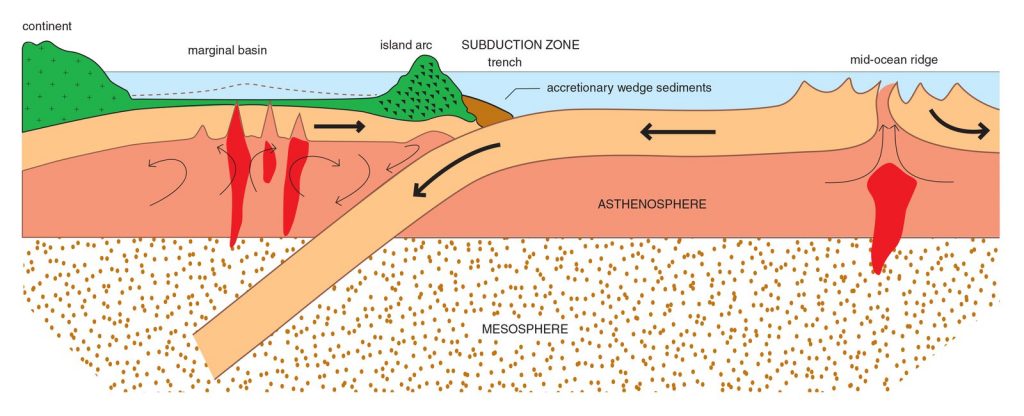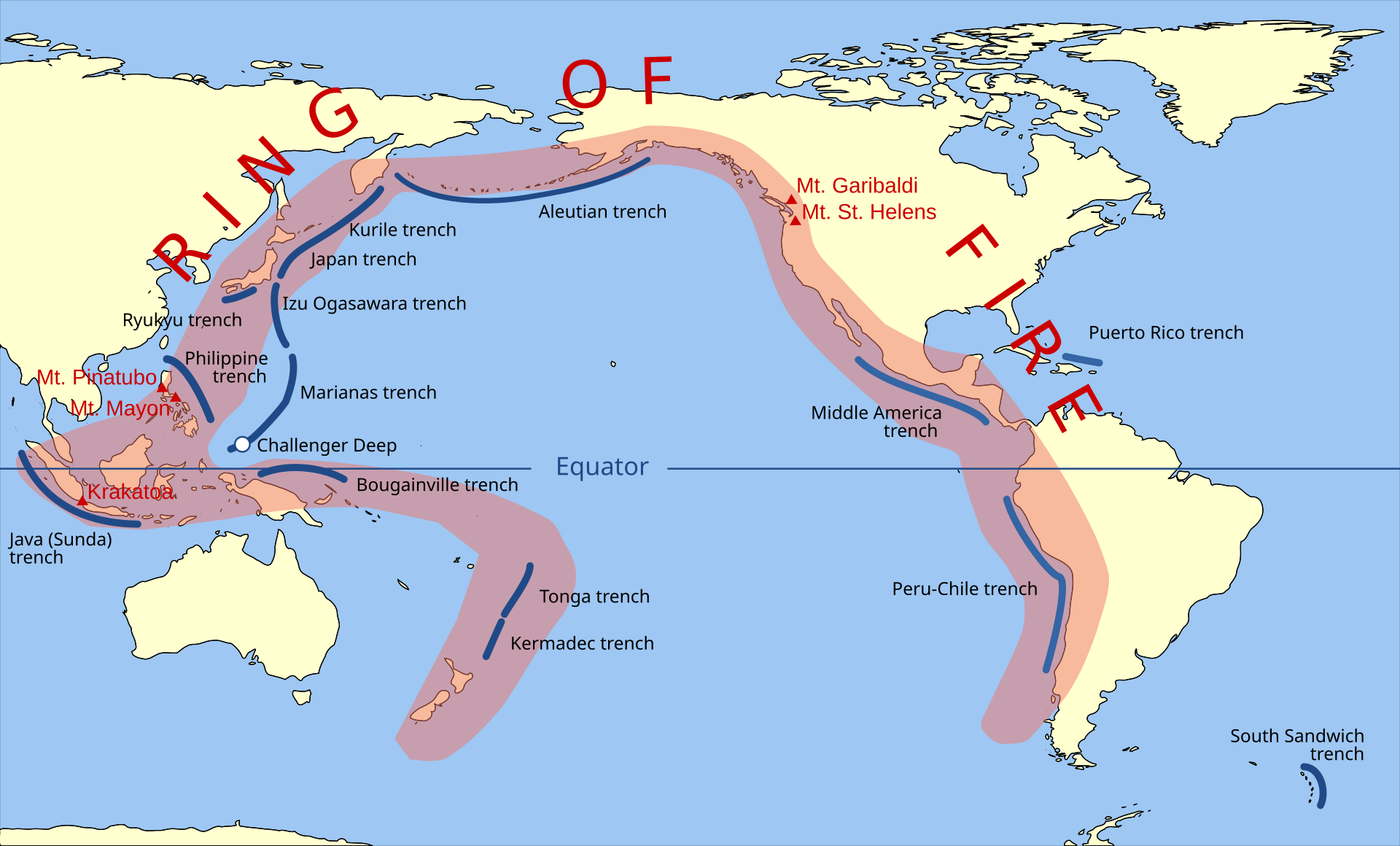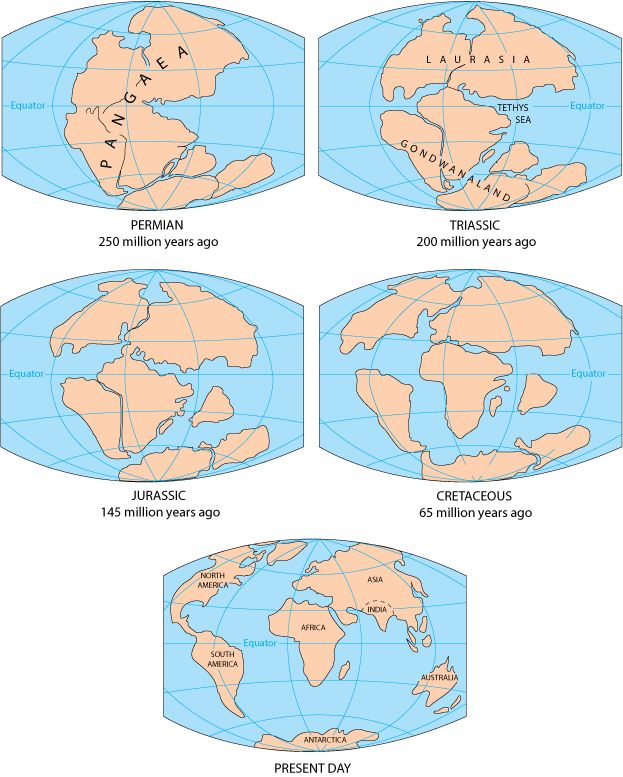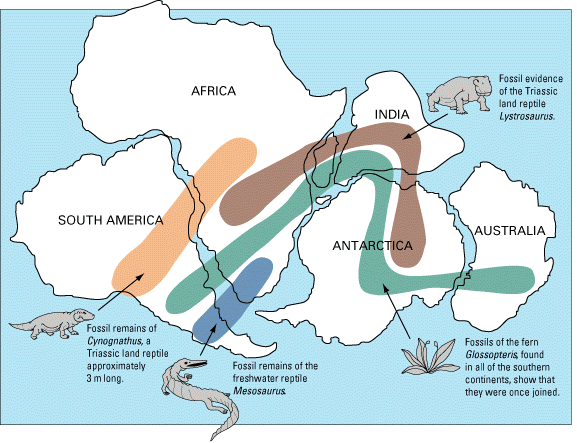A tectonic plate is a massive, irregularly shaped piece of the crust. They are generally composed of continental and oceanic crust. Plate can vary greatly in size, the Pacific and Antarctic Plates are among the largest.

Plate thickness also varies greatly, ranging from less than 15 km for young oceanic lithosphere to about 200 km or more for ancient continental lithosphere.
How do these slabs of solid rock float?
Continental crust is composed of granitic rocks which are made up of relatively lightweight minerals such as quartz and feldspar. By contrast, oceanic crust is composed of basaltic rocks, which are much denser and heavier. The variations in plate thickness are nature’s way of partly compensating for the imbalance in the weight and density of the two types of crust. Because continental rocks are much lighter, the crust under the continents is much thicker (as much as 100 km) whereas the crust under the oceans is generally only about 5 km thick. Like icebergs, only the tips of which are visible above water, continents have deep “roots” to support their elevations.

Most of the boundaries between individual plates cannot be seen, because they are hidden beneath the oceans. Yet oceanic plate boundaries can be mapped accurately from outer space by measurements from satellites. Earthquake and volcanic activity is concentrated near these boundaries.
The Ring of Fire
The Ring of Fire occurs where the Pacific Plate meets many surrounding tectonic plates and is the most seismically and volcanically active zone in the world. The Ring of Fire is made up of a series of oceanic trenches and volcanic arcs caused by plate movements. It has 452 volcanoes, more than 75% of the world’s active and dormant volcanoes.

Tectonic plates could have developed as early as 4 billion year ago, and they have been drifting about on the surface ever since-like slow-moving bumper cars repeatedly clustering together and then separating. The maps below show the breakup of Pangaea 250 million years ago.

Apart from the matching geological features there is also fossil evidence supporting this theory. You can see from the image below that the locations of fossils plants and animals form patterns if the continents are rejoined.

But what was the world like before plate Tectonics?
Find out whats new for you and your students with the latest Blogs from Australian Environmental Education.
- Plastic Free July
- Junior Riverkeeper
- Exploring the Underwater World
- World Wetlands Day 2025
- Violet Snails, nature’s floating marvels
Follow Australian Environmental Education on Facebook

